NYC’s Forgotten ‘War on Christmas Trees’
Discover how an obscure holiday crackdown affects festive street vendors today!


New York City is a city known for constantly rebuilding itself, and despite the constant flurry of new construction each year, old, historic buildings remain incorporated into the city’s built fabric thanks to community-led preservation efforts and city landmarking laws. Lying amidst the towering skyscrapers and increasing number of chain stores, Manhattan hides several centuries-old gems: buildings dating back to the 1700s, many of them playing an important role in the American Revolution – from colonial taverns to actual farmhouses.
Below we explore the oldest buildings in Manhattan, listed from oldest to most recent:
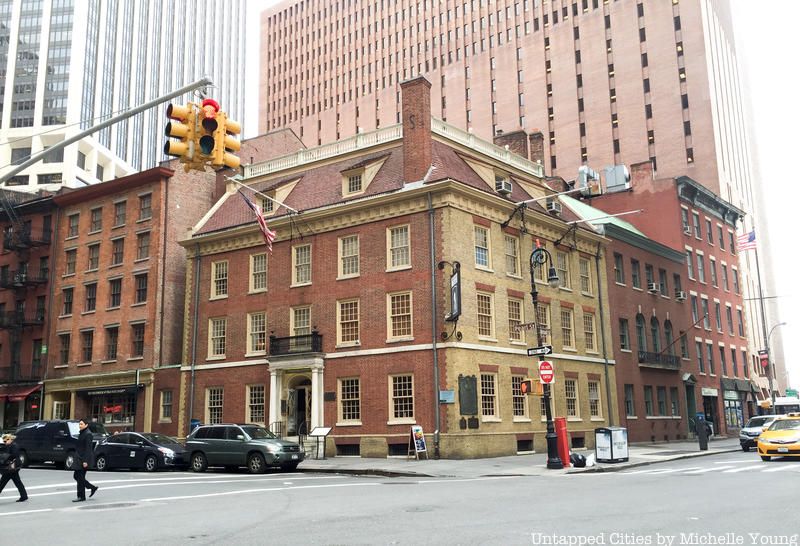
Holding both the title of “Manhattan’s oldest building” and “New York’s oldest restaurant,” Fraunces Tavern played a crucial role in the American Revolution and even housed several federal offices afterwards. Located at the corner of Pearl and Broad Street, the legendary tavern now functions as both a museum (on the second and third floors) and an expansive restaurant (taking up the first floor).
Built by Stephen DeLancey in 1719 and bought by Samuel Fraunces in 1762, the building now known as Fraunces Tavern was a hotspot for revolutionary activity, serving as the meeting point for many secret societies, like The Sons of Liberty. A Royal Navy cannon ball crashed through tavern’s roof in August of 1775, and in 1783, the then-general George Washington chose to bid farewell to his officers inside its historic halls. The building was bought by The Sons of the Revolution in the State of New York in 1904 and in 1906 underwent a massive and controversial reconstruction which unsteadied its claim as Manhattan’s oldest building. The goal was to restore the building to its colonial appearance, but as there was little to no information (and no pictures) on the original architecture, the reconstruction was extremely speculative, and resulted in an almost entirely new construction.
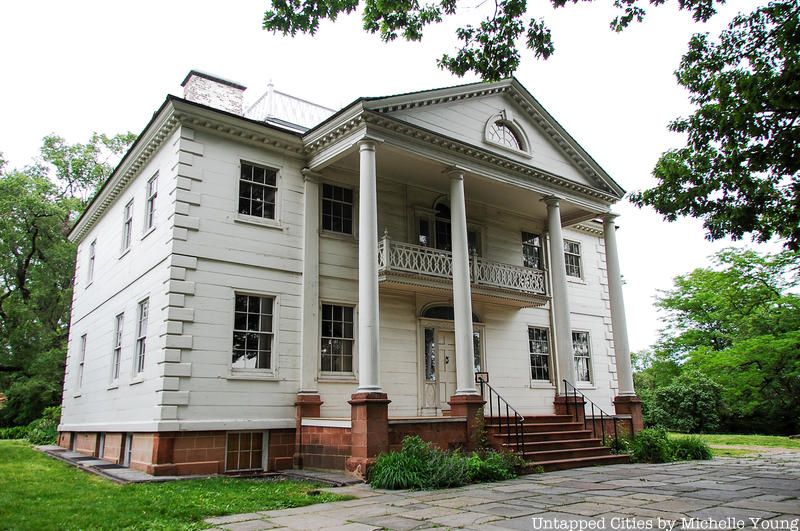
“There’s always something new at Manhattan’s oldest house” is the slogan of the Morris-Jumel Mansion Museum, and with a history so fraught with action, drama and scandal, it’s easy to see why. Far away from the usual tourist hot-spots, the Morris-Jumel Mansion lies in Upper Manhattan’s Washington Heights, and its Palladian style architecture recalls a time when New York was nothing more than a small colony. Built by Colonel Roger Morris, and abandoned when he fled during the American Revolution, the house served as a refuge for both sides of the front and was even the headquarters for General Washington and his troops in the autumn of 1776.
During the 1800s, the house was also the home of Eliza Jumel, a shrewd businesswoman who was once one of the wealthiest women in New York. Her difficult romantic history (she at one point married and quickly separated from the third vice president of the United States, Aaron Burr) has led many to believe that her troubled ghost still roams the halls of the home she died in, and the Morris-Jumel Mansion Museum even has ongoing paranormal investigations, among its many other planned events and exhibitions.
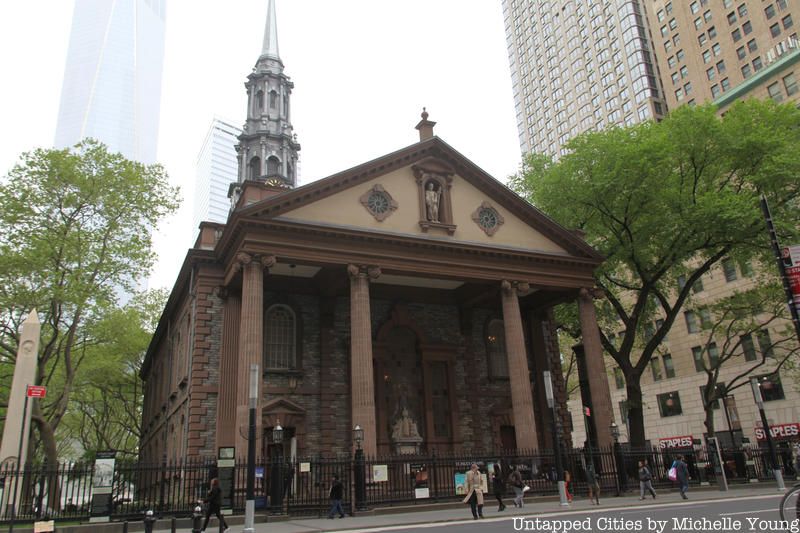
Nicknamed “The Little Chapel That Stood” after the September 11 attacks, St. Paul’s is an Episcopal chapel located in Lower Manhattan and the oldest surviving church in the borough. An active part of the Parish of Trinity Church, St. Paul’s was built in 1766 as a “chapel-of-ease” for those who did not want travel to the mother church, and its Georgian influence can be seen through its interior and classical portico.
St. Paul’s nickname may have come from the miraculous lack of damage it received when the World Trade Center Buildings collapsed just a block away, but that is not the only time St. Paul’s has survived seemingly fatal events: during the Great Fire of 1776, which destroyed the first Trinity Church, the humble chapel was saved by a bucket brigade. St. Paul’s subsequently became the home church for many while the second Trinity Church was being constructed, including George Washington, who famously took his oath of office as the first President of the United States and then made his way to St. Paul’s to pray.
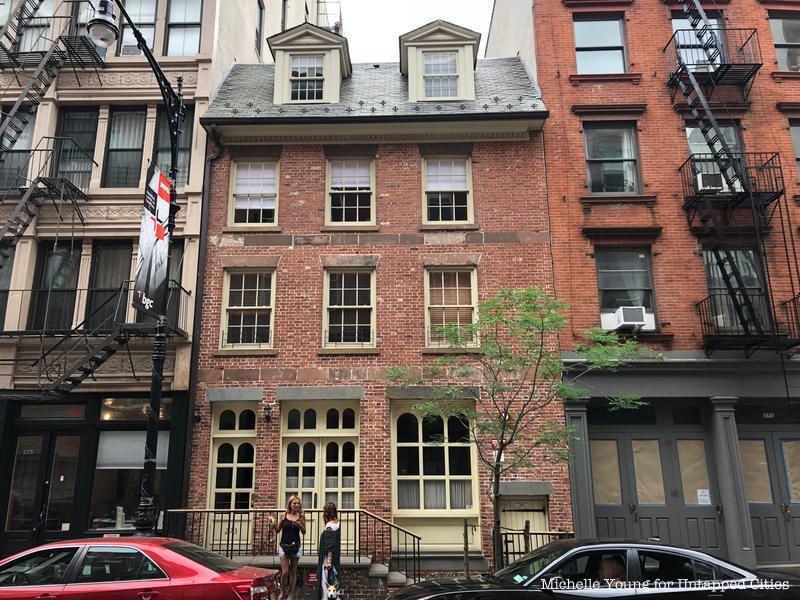
If you discount Fraunces Tavern, the Captain Joseph Roe House is actually the third oldest building in Manhattan dating to 1773-81. We previously showcased this in our article about the “wicked” secrets of South Street Seaport, penned by William Roka, a historian at the South Street Seaport Museum. Roka writes that though Georgian townhouse was originally built in a fashionable district, nearly a century later it was Kit Burns’ Sportsman Hall, home to illegal boxing matches and even more infamously, rat pit killings: “Wharf rats packed 50 to cage were let loose into the area and then a weasel would be sent in. Howver it was only when the fighting dogs were let in that the crowds would really go wild! Some of Burns’s prize dogs could kill 100 rats within a few minutes.”
According to the Historic Districts Council, this building at 273 Water Street is the oldest building in South Street Seaport and was often occupied by merchant families, with Captain Roe often at sea. It was converted into luxury apartments in the late ’90s.
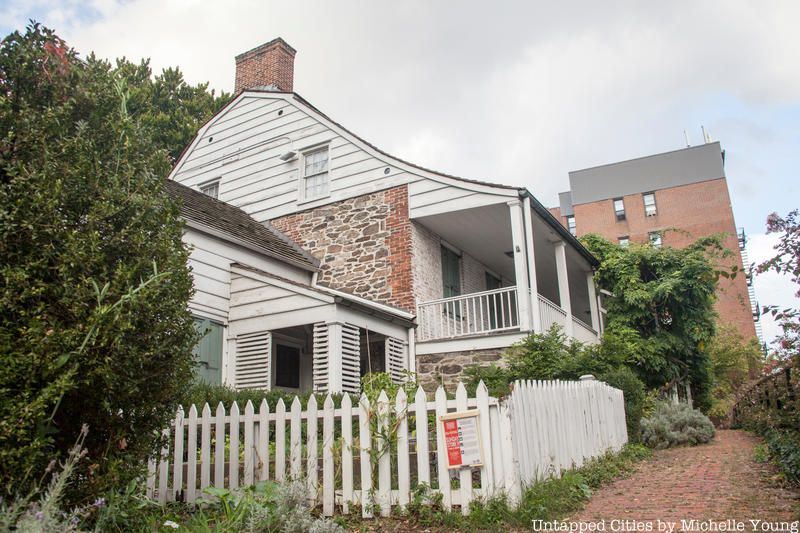
A farmhouse in Manhattan seems like something miles outside the realm of possibility, and yet there lies Dyckman farmhouse right on 204th Street, looking down on the rest of Manhattan, and thanks to the efforts of Mary Alice Dyckman Dean and Fannie Fredericka Dyckman Welch, the farmhouse will continue to be a relic of Dutch colonial architecture and life for years to come.
Built in 1784 by William Dyckman, the farmhouse used to be part of an immense 250-acre farm. As Manhattan’s rapid development in the early 1900s started doing away with most of the old colonial homes in the area, it seemed like the Dyckman Farmhouse was heading towards the same fate. Mary and Fannie, however, the two granddaughters of the last Dyckman to grow up in the house, bought the property in 1915 and started a restoration effort that resulted in the museum we see today. Although it’s not the two hundred acres it once was, the farmhouse still has a lovely garden containing a well, a military hut and an actual reproduction of a smokehouse.

Located in the middle of Chinatown, at the corner of Bowery and Pell Street, the Edward Mooney House is the oldest surviving row house in New York City. The land the house was built on had previously belonged to British Loyalist James DeLancey, before being confiscated and auctioned off. The buyer was Edward Mooney, a wealthy meat merchant who built and lived in the residence until his death in 1800.
The Edward Mooney House was designated a New York City landmark in 1966, one of the reasons being its mix of Georgian architecture (the style preferred by the British) and early Federalist architecture, marked by its gabled roof and round-headed central window. The house’s rich history continues into the 1800 and 1900s, it having been at different points in time a tavern, a brothel and the notorious home of Barney Flynn’s Saloon, headquarters for Chuck Conners, a man infamous for his faked tours of opium dens in the area.
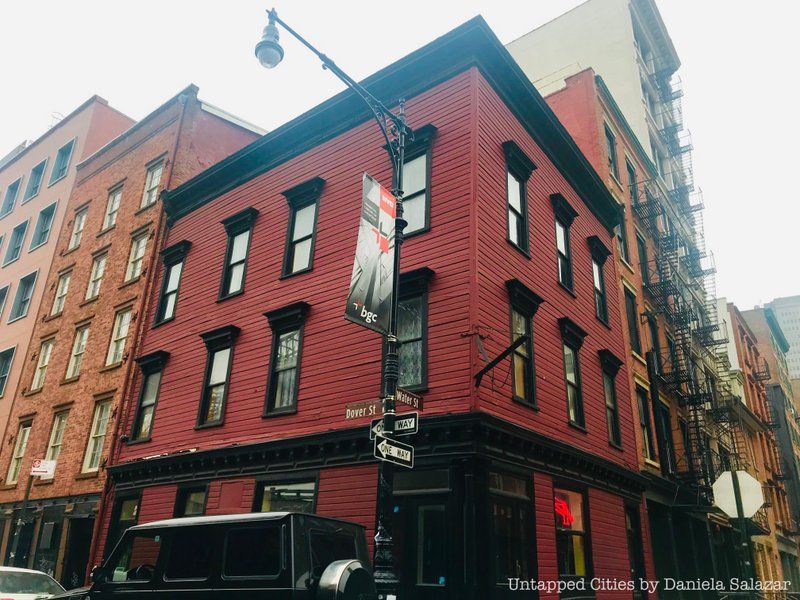
Despite whatever impressions the name gives, Bridge Cafe’s building existed almost a century before the Brooklyn Bridge was built; in fact, the East River used to reach the edge of the 224-year-old building, Water Street originally marking the river’s shoreline. A staple of the South Street Seaport, starting as a grocery and wine and porter bottler, the building holds New York City’s oldest commercial wooden frame and has been home to a series of eating and drinking establishments, as well as brothel in the 1850s.
Having hosted everyone from sailors to pirates, the establishment was bought by the Weprin family in 1979 and became the Bridge Cafe, famous for its soft shell crabs and even more famous regular, New York City major Ed Koch. Bridge Cafe used to be New York City’s oldest continuously running tavern, but it unfortunately closed after Hurricane Sandy inundated the building in 2012 and has remained closed ever since. Fingers crossed this historic bar returns to life in the future!
Next, check out The Oldest Buildings in New York City’s Five Boroughs and 5 Historic War Cannons Still Visible in NYC
Subscribe to our newsletter